Nancy Bilyeau's Blog, page 34
October 20, 2012
Loving the History Lady!
This week a new review popped up in the blogosphere that was just wonderful.
One of the things I like best here is how The History Lady tells her followers how she came across my novel. Sometimes the bloggers receive my book for review from my publisher, sometimes it's won in a goodreads or contest giveaway. But occasionally they stumble across it themselves, and in this case I am so interested in how she learned about The Crown:
The priory of Poissy no longer stands, just as the Dominican priory of Dartford is reduced to bits of stone wall.

It's just so interesting, how we who love the past run across one another!
To read the full review go to: http://thehistorylady.wordpress.com/2...http://thehistorylady.wordpress.com/2012/10/17/wonderful-thrilling-debut-novel-the-crown-by-nancy-bilyeau/

One of the things I like best here is how The History Lady tells her followers how she came across my novel. Sometimes the bloggers receive my book for review from my publisher, sometimes it's won in a goodreads or contest giveaway. But occasionally they stumble across it themselves, and in this case I am so interested in how she learned about The Crown:
"Nancy Bilyeau's debut novel, The Crown leapt to the top of my reading list for purely selfish reasons. I was writing about life in a 16th century priory in Poissy, France and stumbled upon a link between Poissy and Dartford Priory in Kent. Founded by royalty (Edward III) with nuns from Poissy in the 14th Century, Dartford Priory was a prestigious religious institution. I was curious to read an historical fiction account of life there—especially since I have not found an account of life at Poissy. I’m glad I did. The Crown is a thrilling read."While I was researching The Crown, I read about the Dominican priories of Spain, France and Germany. It's not easy to learn about daily life in a medieval or early modern age convent! In England they were all "surrendered" to the king and then dismantled or demolished. But even in Europe, there just aren't many historical records. It became a challenge for me, to learn what I could about the sisters' lives.
The priory of Poissy no longer stands, just as the Dominican priory of Dartford is reduced to bits of stone wall.

It's just so interesting, how we who love the past run across one another!
To read the full review go to: http://thehistorylady.wordpress.com/2...http://thehistorylady.wordpress.com/2012/10/17/wonderful-thrilling-debut-novel-the-crown-by-nancy-bilyeau/
Published on October 20, 2012 05:08
October 13, 2012
A Fun Interview with Anne Boleyn!
I really enjoyed my chat with the Queen Anne Boleyn Historical Writers! They are a lovely group. Happy to give away a book as part of the interview.

To read the interview go here:
http://queenanneboleyn.com/2012/10/10/interview-with-nancy-bilyeau-author-of-the-crown/

To read the interview go here:
http://queenanneboleyn.com/2012/10/10/interview-with-nancy-bilyeau-author-of-the-crown/
Published on October 13, 2012 14:28
October 1, 2012
Richard III and the Lost World of Greyfriars
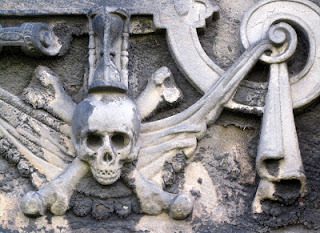 For English Historical Fiction Authors, I wrote an article about the Franciscans who buried Richard III two days after Bosworth. I discovered some fascinating facts about the role of the friars in medieval society!
For English Historical Fiction Authors, I wrote an article about the Franciscans who buried Richard III two days after Bosworth. I discovered some fascinating facts about the role of the friars in medieval society!To read the article, go to:
http://englishhistoryauthors.blogspot.com/2012/09/richard-iii-and-lost-world-of-greyfriars.html
Published on October 01, 2012 02:58
September 20, 2012
TUDOR TEMPEST: Where Do You Stand?
 I've joined forces with the wonderful website On the Tudor Trail to launch a poll series called "Tudor Tempest." September 20th is the birthday of Arthur Tudor, prince of Wales, and so we kick off with a controversy revolving around Arthur.
I've joined forces with the wonderful website On the Tudor Trail to launch a poll series called "Tudor Tempest." September 20th is the birthday of Arthur Tudor, prince of Wales, and so we kick off with a controversy revolving around Arthur.Did the 15-year-old consummate his marriage to Catherine of Aragon? It's a question hotly debated for more than five centuries.
Read the article on Arthur and Catherine, which gathers the "evidence," and then vote!
Go to: http://onthetudortrail.com/Blog/2012/09/20/did-arthur-prince-of-wales-consummate-his-marriage-to-catherine-of-aragon/
Published on September 20, 2012 08:49
September 18, 2012
Tagged: The Next Big Thing
I've been tagged by the talented and generous Donna Galanti, author of The Human Element and my fellow debut at International Thriller Writers, in a blog game called The Next Big Thing. The game involves answering questions about your work in progress or a new piece that you'd love to become the next big thing! For me, that's the sequel to the The Crown, now out in paperback.
Is my "stuff" good enough to be the Next Big Thing? You be the judge! In turn I'm tagging five other authors to take part. So here goes:
Ten Interview Questions for The Next Big Thing:
1.) What Is the title of your book?"The Chalice"
2.) Where did the idea come from for the book?
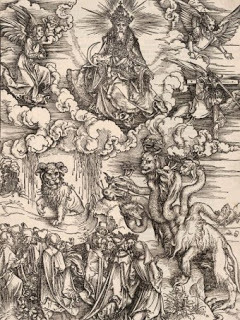 I've always been fascinated with prophecy. Tudor England was a time rife with prophecies and mysticism and magic; I believe it was fed by the anxiety of the time, as religion changed (sometimes violently), the ideas of the Renaissance poured in, and the Middle Ages morphed into the Early Modern Age. So I took this reality of 16th century prophecy and I put my main character, Joanna Stafford, at the very heart of a dangerous one.
I've always been fascinated with prophecy. Tudor England was a time rife with prophecies and mysticism and magic; I believe it was fed by the anxiety of the time, as religion changed (sometimes violently), the ideas of the Renaissance poured in, and the Middle Ages morphed into the Early Modern Age. So I took this reality of 16th century prophecy and I put my main character, Joanna Stafford, at the very heart of a dangerous one.
3.) What genre does your book fall under?
Historical thriller.
4.) Which actors would you choose to play your characters in a movie rendition?
 I can't choose between the wonderful actresses out there to play Joanna Stafford, the protagonist of my series. But I do think that Ralph Fiennes would make a fantastic Bishop Stephen Gardiner--he is the wily antagonist of "The Crown" and the Bishop of Winchester definitely makes his presence known in "The Chalice."
I can't choose between the wonderful actresses out there to play Joanna Stafford, the protagonist of my series. But I do think that Ralph Fiennes would make a fantastic Bishop Stephen Gardiner--he is the wily antagonist of "The Crown" and the Bishop of Winchester definitely makes his presence known in "The Chalice."
5.) What is the one-sentence synopsis of your book?
A young woman driven from her nunnery in Tudor England discovers her life is intertwined with a danger prophecy and she must take control of her destiny before it's too late.
6.) Will your book be self-published or represented by an agency?
"The Chalice" was bought by Touchstone, the publisher of my first book, this year. It's coming out March 2013.
7.) How long did it take you to write the first draft of your manuscript? And read the intro.
Just about one year.
First sentence of "The Chalice":
"When preparing for martyrdom on the night of December 28th, 1538, I did not think of those I love."
8.) What other books would you compare this story to within your genre?
Oliver Pötzsch, "The Dark Monk: A Hangman's Daughter"
Deborah Harkness, "Shadow of Night"
Danielle Trussoni, "Angelology"
9.) Who or what inspired you to write this book?
I very much wanted to write a sequel to "The Crown," but I was determined to raise the stakes. I wanted to try something darker and more epic, but also I wanted to make the second book more romantic. :)
10.) What else about your book might pique the reader's interest?
Some of the real people who lived in the late 1530s pop up in The Chalice, including not one but two women who would marry Henry VIII. Joanna Stafford also comes face to face, at last, with...Thomas Cromwell.
Donna Galanti tagged me and I'm tagging some of my favorite people!
Sophie Perinot
Lydia Netzer
Debra Brown
Authoress
Doug Solter
Please visit their blogs. They will be publishing their answers to the questions in week 13 (between the 18th September and 24th September)
Message for the tagged authors and interested others:
Rules of the Next Big Thing
***Use this format for your post
***Answer the ten questions about your current WIP (work in progress)
***Tag five other writers/bloggers and add their links so we can hop over and meet them.
Ten Interview Questions for the Next Big Thing:
What is your working title of your book?
Where did the idea come from for the book?
What genre does your book fall under?
Which actors would you choose to play your characters in a movie rendition?
What is the one-sentence synopsis of your book?
Will your book be self-published or represented by an agency?
How long did it take you to write the first draft of your manuscript?
What other books would you compare this story to within your genre?
Who or what inspired you to write this book?
What else about your book might pique the reader's interest?
Include the link of who tagged you and this explanation for the people you have tagged.
Be sure to line up your five people in advance.
Share this on your social media!

Is my "stuff" good enough to be the Next Big Thing? You be the judge! In turn I'm tagging five other authors to take part. So here goes:
Ten Interview Questions for The Next Big Thing:
1.) What Is the title of your book?"The Chalice"
2.) Where did the idea come from for the book?
 I've always been fascinated with prophecy. Tudor England was a time rife with prophecies and mysticism and magic; I believe it was fed by the anxiety of the time, as religion changed (sometimes violently), the ideas of the Renaissance poured in, and the Middle Ages morphed into the Early Modern Age. So I took this reality of 16th century prophecy and I put my main character, Joanna Stafford, at the very heart of a dangerous one.
I've always been fascinated with prophecy. Tudor England was a time rife with prophecies and mysticism and magic; I believe it was fed by the anxiety of the time, as religion changed (sometimes violently), the ideas of the Renaissance poured in, and the Middle Ages morphed into the Early Modern Age. So I took this reality of 16th century prophecy and I put my main character, Joanna Stafford, at the very heart of a dangerous one.3.) What genre does your book fall under?
Historical thriller.
4.) Which actors would you choose to play your characters in a movie rendition?
 I can't choose between the wonderful actresses out there to play Joanna Stafford, the protagonist of my series. But I do think that Ralph Fiennes would make a fantastic Bishop Stephen Gardiner--he is the wily antagonist of "The Crown" and the Bishop of Winchester definitely makes his presence known in "The Chalice."
I can't choose between the wonderful actresses out there to play Joanna Stafford, the protagonist of my series. But I do think that Ralph Fiennes would make a fantastic Bishop Stephen Gardiner--he is the wily antagonist of "The Crown" and the Bishop of Winchester definitely makes his presence known in "The Chalice."5.) What is the one-sentence synopsis of your book?
A young woman driven from her nunnery in Tudor England discovers her life is intertwined with a danger prophecy and she must take control of her destiny before it's too late.
6.) Will your book be self-published or represented by an agency?
"The Chalice" was bought by Touchstone, the publisher of my first book, this year. It's coming out March 2013.
7.) How long did it take you to write the first draft of your manuscript? And read the intro.
Just about one year.
First sentence of "The Chalice":
"When preparing for martyrdom on the night of December 28th, 1538, I did not think of those I love."
8.) What other books would you compare this story to within your genre?
Oliver Pötzsch, "The Dark Monk: A Hangman's Daughter"
Deborah Harkness, "Shadow of Night"
Danielle Trussoni, "Angelology"
9.) Who or what inspired you to write this book?
I very much wanted to write a sequel to "The Crown," but I was determined to raise the stakes. I wanted to try something darker and more epic, but also I wanted to make the second book more romantic. :)
10.) What else about your book might pique the reader's interest?
Some of the real people who lived in the late 1530s pop up in The Chalice, including not one but two women who would marry Henry VIII. Joanna Stafford also comes face to face, at last, with...Thomas Cromwell.
Donna Galanti tagged me and I'm tagging some of my favorite people!
Sophie Perinot
Lydia Netzer
Debra Brown
Authoress
Doug Solter
Please visit their blogs. They will be publishing their answers to the questions in week 13 (between the 18th September and 24th September)
Message for the tagged authors and interested others:
Rules of the Next Big Thing
***Use this format for your post
***Answer the ten questions about your current WIP (work in progress)
***Tag five other writers/bloggers and add their links so we can hop over and meet them.
Ten Interview Questions for the Next Big Thing:
What is your working title of your book?
Where did the idea come from for the book?
What genre does your book fall under?
Which actors would you choose to play your characters in a movie rendition?
What is the one-sentence synopsis of your book?
Will your book be self-published or represented by an agency?
How long did it take you to write the first draft of your manuscript?
What other books would you compare this story to within your genre?
Who or what inspired you to write this book?
What else about your book might pique the reader's interest?
Include the link of who tagged you and this explanation for the people you have tagged.
Be sure to line up your five people in advance.
Share this on your social media!
Published on September 18, 2012 12:08
September 14, 2012
And Now...the Murder Weapon
 Daphne in pearls!On the blog of superb historical-fiction novelist Sophie Perinot ("Sister Queens") I reveal my obsession with Daphne du Maurier, how important it was to understand the values of a 16th Century Dominican nun, and where I got the idea for an unusual murder weapon.
Daphne in pearls!On the blog of superb historical-fiction novelist Sophie Perinot ("Sister Queens") I reveal my obsession with Daphne du Maurier, how important it was to understand the values of a 16th Century Dominican nun, and where I got the idea for an unusual murder weapon.To read the interview, go here.
Published on September 14, 2012 08:46
September 9, 2012
Award for The Crown
 Stuart MacAllister, the author and U.K. book blogger Sir Read-A-Lot, just announced a new award, the Golden Hammer & Anvil Shield, for novels whose stories "are impeccably crafted, where authors have taken care to ensure their manuscript is properly edited ... where the story evokes thought and emotion long after the final sentence has been read." "The Crown is one of four winners. Read announcement here.
Stuart MacAllister, the author and U.K. book blogger Sir Read-A-Lot, just announced a new award, the Golden Hammer & Anvil Shield, for novels whose stories "are impeccably crafted, where authors have taken care to ensure their manuscript is properly edited ... where the story evokes thought and emotion long after the final sentence has been read." "The Crown is one of four winners. Read announcement here.Thank you, Sir Read-A-Lot. :)
Published on September 09, 2012 05:51
September 6, 2012
Sister Joanna’s Home
By Nancy Bilyeau
In the town of Dartford, a 40-minute train ride south of London Charing Cross, is a building called the Manor Gatehouse. Inside you will find a registration office to record the births, marriages, and deaths that occur in Kent. This handsome red-brick building, fronted by a garden, is also a popular place to book a wedding reception. “It looks amazing in the official pictures,” gushed one satisfied bride in a website testimonial.
But when I first walked up that path to the Gatehouse, I was filled with awe, and definitely not because I was planning a wedding. I was thinking of who stood on this same piece of ground six centuries ago. Because it was then a Catholic priory—a community of women who constituted the sole Dominican order in England before the dissolution of the monasteries—and it is where I chose to tell the story of The Crown.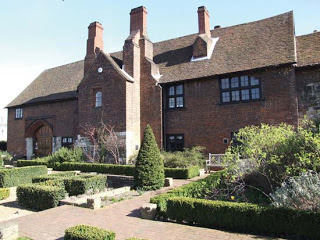 The Gatehouse of Henry VIII's Manor
The Gatehouse of Henry VIII's Manor
This is where Sister Joanna Stafford, my half-English, half-Spanish protagonist, prayed, and sang, and wept, and struggled.
I didn't create a Catholic novice as a protagonist for my book because of a religious or political agenda. A lifelong Tudor fanatic, I felt I had no choice but to set a story in the 16th century. I wanted to write about someone different, and so I plunged into researching the life of a young nun at the most tumultuous time in the Dissolution of the Monasteries. What would it be like to have your way of life taken from you--would you try to stop the destruction, or accept the inevitable?
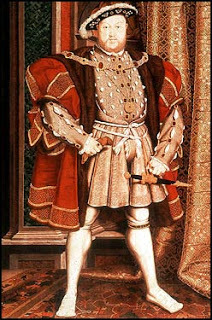
At one time, like many others, I accepted a series of "truths" about life in the time of Henry VIII: people did not often live to old age; women were rarely educated outside of the royal family or high aristocracy; women outside of the court of the king, and the carnal grasp of the king, were not as interesting to our modern sensibilities; the monastic life was in decline, most likely corrupt, and deserved to be ended; and nuns were either forced to take vows or ended up in convents because they were not as "good" as the women who married--ie, they were rejects.
My years of research revealed to me how wrong all of those stereotypes were.
The true story of one woman's life, Prioress Elizabeth Cressner, illuminates some of the complex truths. A "good and virtuous woman," she was the leader of the priory in Dartford for 50 years; she died in December 1536 at somewhere between 75 and 80 years of age, just as Henry VIII was putting intense pressure on the monasteries to submit to his will. Edward IIIDartford Priory had been founded with great care by Edward III, although the idea of establishing a house for Dominican sisters is attributed to Edward II. Did he feel some obligation to carry out the wish of his deposed father? Impossible to know. Once the pope approved the founding of the order, four Dominican sisters were recruited from France, for whose expenses 20 pounds was paid from the Exchequer.
Edward IIIDartford Priory had been founded with great care by Edward III, although the idea of establishing a house for Dominican sisters is attributed to Edward II. Did he feel some obligation to carry out the wish of his deposed father? Impossible to know. Once the pope approved the founding of the order, four Dominican sisters were recruited from France, for whose expenses 20 pounds was paid from the Exchequer.
The English priory soon established a reputation for "strict discipline and plain living." Dartford was known for the value put on education and contained a library of books. It also drew aristocratic nuns, even royalty, most famously Princess Bridget of York, the daughter of Edward IV and Elizabeth Woodville.
Prioress Elizabeth Cressner took on her tasks with great energy and a bold temperament. She executed wills for people in the community and appointed priests to celebrate Mass in the parish church and masters to oversee the local almshouse for the poor. She administered much of the property owned by the priory, even though it was technically the job of the friars assigned there.
In the 1530s, Thomas Cromwell was turning a speculative eye on the monasteries. Undaunted, Prioress Elizabeth sent Henry VIII's minister a series of firm letters over a recent appointment of a certain Friar Robert Stroddel as president at the Dartford community. The prioress found him unkind and even dishonest.
The prioress wrote Cromwell:
Despite such fiery letters, the prioress was unable to dislodge Friar Stroddel. When Elizabeth Cresssner died, the convent at Dartford was still intact. There was no corruption found at the priory by the king's investigators. But her successor, Joan Vane, was forced to surrender it just the same to the king, and all of the nuns were expelled with small pensions and no place to go.
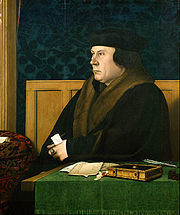
The king did not award the priory to a favored courtier, as he usually did. He took the priory for himself, ordered it demolished and a luxurious manor house raised on the property. Henry VIII never slept there, though his ex-wife, Anne of Cleves, lived there for a time.
The manor house was given to Sir Robert Cecil by King James I, and passed through various hands before being demolished by the 19th century. All that remains is the red-brick gatehouse, although that was built by Henry VIII. Nothing is left of the priory itself, except for the stone wall that ran along its perimeter.
 The priory wall, seen at rightOne a cloudy afternoon, I walked the perimeter of the centuries-old wall, as the cars whizzed by. There are no Dartford Priory gift shops, as exist at the carefully preserved Tower of London. No mugs for sale bearing the face of Prioress Elizabeth Cressner. But her life was significant all the same.
The priory wall, seen at rightOne a cloudy afternoon, I walked the perimeter of the centuries-old wall, as the cars whizzed by. There are no Dartford Priory gift shops, as exist at the carefully preserved Tower of London. No mugs for sale bearing the face of Prioress Elizabeth Cressner. But her life was significant all the same.
I paid her homage on my solitary walk.
In the town of Dartford, a 40-minute train ride south of London Charing Cross, is a building called the Manor Gatehouse. Inside you will find a registration office to record the births, marriages, and deaths that occur in Kent. This handsome red-brick building, fronted by a garden, is also a popular place to book a wedding reception. “It looks amazing in the official pictures,” gushed one satisfied bride in a website testimonial.
But when I first walked up that path to the Gatehouse, I was filled with awe, and definitely not because I was planning a wedding. I was thinking of who stood on this same piece of ground six centuries ago. Because it was then a Catholic priory—a community of women who constituted the sole Dominican order in England before the dissolution of the monasteries—and it is where I chose to tell the story of The Crown.
 The Gatehouse of Henry VIII's Manor
The Gatehouse of Henry VIII's ManorThis is where Sister Joanna Stafford, my half-English, half-Spanish protagonist, prayed, and sang, and wept, and struggled.
I didn't create a Catholic novice as a protagonist for my book because of a religious or political agenda. A lifelong Tudor fanatic, I felt I had no choice but to set a story in the 16th century. I wanted to write about someone different, and so I plunged into researching the life of a young nun at the most tumultuous time in the Dissolution of the Monasteries. What would it be like to have your way of life taken from you--would you try to stop the destruction, or accept the inevitable?

At one time, like many others, I accepted a series of "truths" about life in the time of Henry VIII: people did not often live to old age; women were rarely educated outside of the royal family or high aristocracy; women outside of the court of the king, and the carnal grasp of the king, were not as interesting to our modern sensibilities; the monastic life was in decline, most likely corrupt, and deserved to be ended; and nuns were either forced to take vows or ended up in convents because they were not as "good" as the women who married--ie, they were rejects.
My years of research revealed to me how wrong all of those stereotypes were.
The true story of one woman's life, Prioress Elizabeth Cressner, illuminates some of the complex truths. A "good and virtuous woman," she was the leader of the priory in Dartford for 50 years; she died in December 1536 at somewhere between 75 and 80 years of age, just as Henry VIII was putting intense pressure on the monasteries to submit to his will.
 Edward IIIDartford Priory had been founded with great care by Edward III, although the idea of establishing a house for Dominican sisters is attributed to Edward II. Did he feel some obligation to carry out the wish of his deposed father? Impossible to know. Once the pope approved the founding of the order, four Dominican sisters were recruited from France, for whose expenses 20 pounds was paid from the Exchequer.
Edward IIIDartford Priory had been founded with great care by Edward III, although the idea of establishing a house for Dominican sisters is attributed to Edward II. Did he feel some obligation to carry out the wish of his deposed father? Impossible to know. Once the pope approved the founding of the order, four Dominican sisters were recruited from France, for whose expenses 20 pounds was paid from the Exchequer.The English priory soon established a reputation for "strict discipline and plain living." Dartford was known for the value put on education and contained a library of books. It also drew aristocratic nuns, even royalty, most famously Princess Bridget of York, the daughter of Edward IV and Elizabeth Woodville.
Prioress Elizabeth Cressner took on her tasks with great energy and a bold temperament. She executed wills for people in the community and appointed priests to celebrate Mass in the parish church and masters to oversee the local almshouse for the poor. She administered much of the property owned by the priory, even though it was technically the job of the friars assigned there.
In the 1530s, Thomas Cromwell was turning a speculative eye on the monasteries. Undaunted, Prioress Elizabeth sent Henry VIII's minister a series of firm letters over a recent appointment of a certain Friar Robert Stroddel as president at the Dartford community. The prioress found him unkind and even dishonest.
The prioress wrote Cromwell:
"And now of late I understand {Stroddel} hath purchased letters of your good lordship under our most gracious founder's seal to be president here the term of his life, by feigned and untrue suggestion, for as much as he hath governed the office so well, as he himself reporteth."
Despite such fiery letters, the prioress was unable to dislodge Friar Stroddel. When Elizabeth Cresssner died, the convent at Dartford was still intact. There was no corruption found at the priory by the king's investigators. But her successor, Joan Vane, was forced to surrender it just the same to the king, and all of the nuns were expelled with small pensions and no place to go.

The king did not award the priory to a favored courtier, as he usually did. He took the priory for himself, ordered it demolished and a luxurious manor house raised on the property. Henry VIII never slept there, though his ex-wife, Anne of Cleves, lived there for a time.
The manor house was given to Sir Robert Cecil by King James I, and passed through various hands before being demolished by the 19th century. All that remains is the red-brick gatehouse, although that was built by Henry VIII. Nothing is left of the priory itself, except for the stone wall that ran along its perimeter.
 The priory wall, seen at rightOne a cloudy afternoon, I walked the perimeter of the centuries-old wall, as the cars whizzed by. There are no Dartford Priory gift shops, as exist at the carefully preserved Tower of London. No mugs for sale bearing the face of Prioress Elizabeth Cressner. But her life was significant all the same.
The priory wall, seen at rightOne a cloudy afternoon, I walked the perimeter of the centuries-old wall, as the cars whizzed by. There are no Dartford Priory gift shops, as exist at the carefully preserved Tower of London. No mugs for sale bearing the face of Prioress Elizabeth Cressner. But her life was significant all the same.I paid her homage on my solitary walk.
Published on September 06, 2012 13:27
July 24, 2012
A Bit of Fun!
 My friend Sere Prince Halverson, author of the wonderful novel The Underside of Joy, took my book with her to the dentist...to get a crown done. Ha!
My friend Sere Prince Halverson, author of the wonderful novel The Underside of Joy, took my book with her to the dentist...to get a crown done. Ha!
Published on July 24, 2012 04:31
July 8, 2012
View From an English Bookstore
I love hearing that people see my novel in other countries. The Crown is now on sale in England, Australia, Germany, Italy, and the Netherlands. They all have different covers, and two have different titles: The Last Veil in Italy and The Last Nun in Germany.
My editor at Orion Books in the UK snapped this wonderful photo:


My editor at Orion Books in the UK snapped this wonderful photo:

Published on July 08, 2012 05:47



